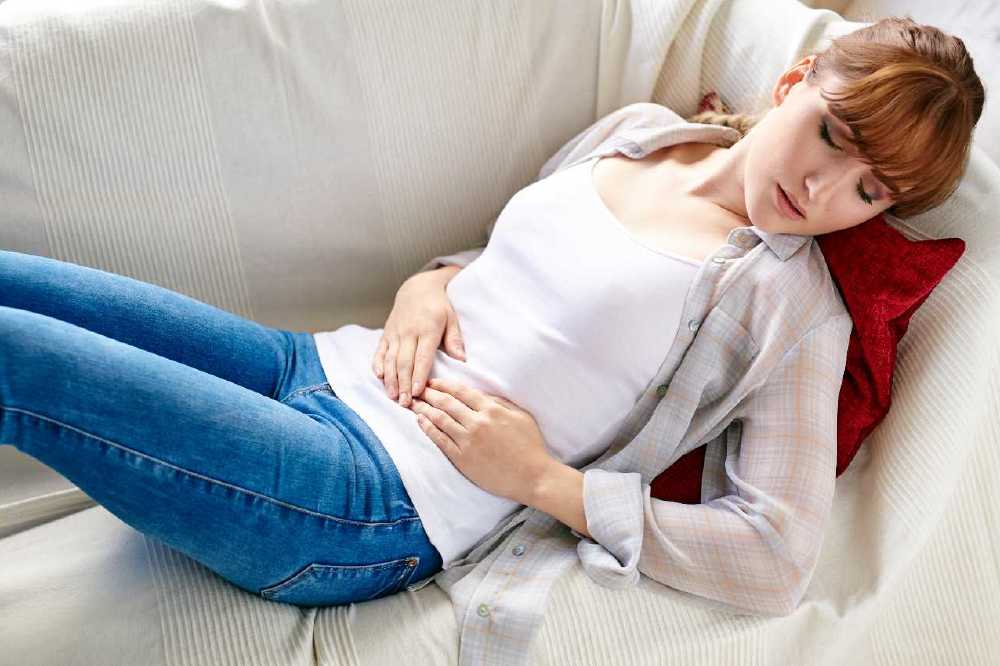By @CrabSophie
When it comes to the medical gender gap, nowhere is it more apparent than getting a diagnosis for chronic pelvic pain. Endometriosis, a condition where the uterine lining grows on tissues outside of the uterus, is estimated to affect one in ten people with a uterus. It’s often agonising. However, it usually takes several stressful years of pressuring GPs to be taken seriously to come to this diagnosis. So, why is it so hard for people to be diagnosed, and what signs of endometriosis should you look out for?

hris Rout / Alamy Stock Photo
What is endometriosis?
Endometriosis is a condition where the cells that usually make up the ‘cushioning’ of the womb for prospective embryos to develop also begin growing outside of it. These cells often break down in the same manner as the regular uterus lining and present sufferers with the same symptoms (e.g., cramps).
It often explains why you may experience a ‘tyre’ of pain around your midsection. These cells can grow in the small intestine, colon, bladder, or bowel.
Who does it affect?
Endometriosis can affect anyone with a female reproductive system, from puberty to perimenopause.
Symptoms to look out for
These symptoms often point to different sources, and as my GP was unfamiliar with endometriosis, it’s understandable that they may reach other conclusions first.
· Chronic fatigue, leading to low mood
· Painful, heavy, or irregular periods
· Urination and or bowel pain
· Pelvic and lower back pain
· Nausea; vomiting
· Diarrhea, constipation and or irritable bowel syndrome
· Painful (during and or after) sex
· Bloating around the pelvic area; weight gain
Why does diagnosis take so long?
Lack of awareness
Most of the people I have spoken to regarding the condition haven’t heard of it. With more awareness, which Endometriosis UK is campaigning for, we can make appointments armed with the knowledge to help ourselves speed up the process.
It doesn’t help that 1 in 3 women who were eventually diagnosed (interviewed in 2017) were told by healthcare practitioners that even severe menstrual pain was ‘just part of being a woman’.
The inequity of NHS funding
This month, The Royal College of Obstetricians and Gynaecologists (RCOG) reported a worrying 60% increase in gynaecology waiting times. Gynaecology is the service with the most significant percentage increase in NHS waiting lists. This is exaggerated by an extended period of service restrictions due to shielding from COVID-19.
The report calculates half a million patients are waiting for this care. This includes many with endometriosis not being able to access the care, answers, and treatment they need.
Many of these people deal with debilitating symptoms and chronic pain while waiting. The negative impact this has on their daily life, including strains on their mental health such as anxiety and low mood, is severe.
Misdiagnosis: a case of trial and error
The fatigue and pain I first reported as a teenager was passed off because I had extremely heavy periods. I was put through the wringer trying to find a hormonal pill (an all-too-common practice) that regulates the duration and flow of my menstrual cycle. Low and behold – the pain and fatigue were not resolved, and they became more severe.
Later, I was treated for dysmenorrhea, the fancy term for chronic menstrual pain where the patient isn’t thought to have physical growths causing it. At this stage, the doctor believed it was a hormone imbalance. When pain broke through the hormone they prescribed, this ruled that out too.
If the Pill isn’t cutting it, most GPs will prescribe pain medication to mask the symptoms of the cramps – but this fails to identify the source.
Unfortunately, endometriosis doesn’t commonly rear its ugly head under ultrasound or blood tests: it must be found through the keyhole, exploratory surgery. I’m currently one of many stuck on surgery waiting lists for my pain diagnosis.
What support is out there for managing the condition?
Endometriosis UK is the UK’s largest charity supporting those affected by endometriosis with a dedicated helpline, local support groups, a 50,000 member-strong online community, and resources to access. The Mighty are an online, worldwide community of people armed with support and suggestions for mental and physical conditions, one of these being endometriosis. Here, you can join forums, read relevant articles, and more. Mind is a charity focused on championing education and empowerment around mental health. They understand the toil that chronic physical pain can have on mental health.
If you have any concerns that you or a loved one may have endometriosis, the important thing is to reach out to a medical professional with as much information about your body’s functions as possible; I keep track of my symptoms through the menstrual cycle tracker Clue, but a notebook or diary would work equally well. Maintain your nerve: don’t be dismissed; ask for a second or third, or fourth opinion if you need to.

